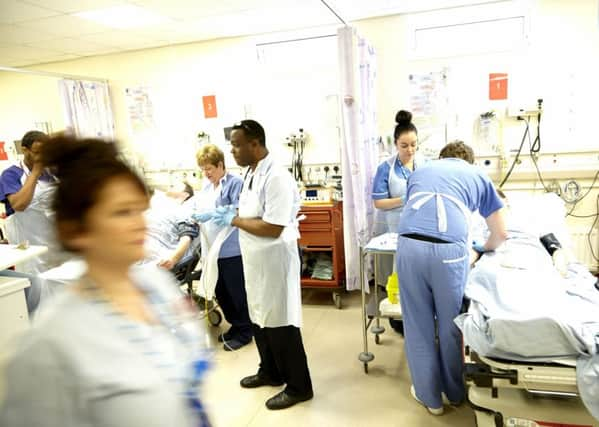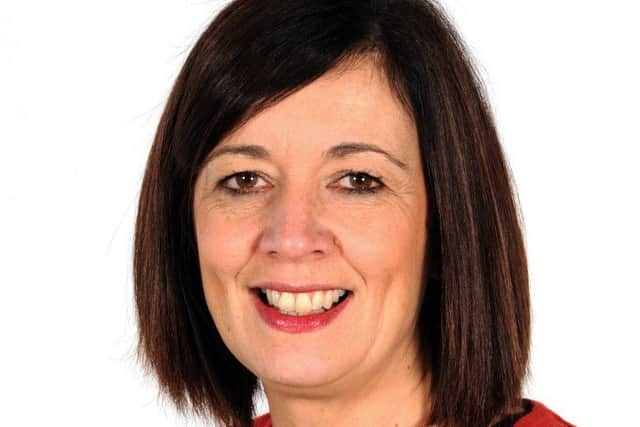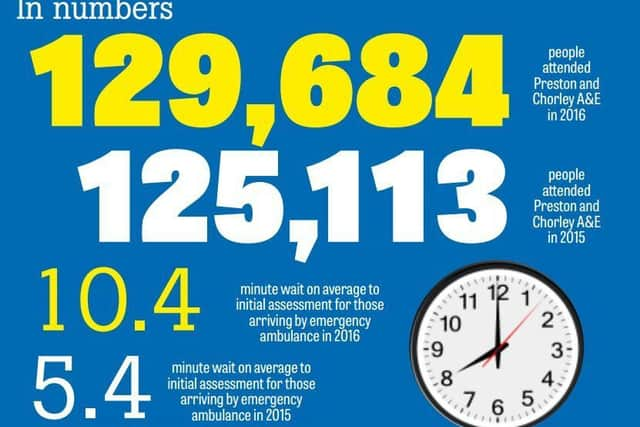NHS IN CRISIS: Thousands of patients walked out of A&E before being treated last year


Faced with an average visit of almost two-and-a-half hours, 5,175 patients walked out of casualty as medics were forced to cope with a record number of people coming through the door.
The Post’s analysis of provisional NHS statistics, which today lay bare the true impact of the under-funding of local health services, also showed:
Advertisement
Hide AdAdvertisement
Hide Ad• Some 129,684 turned up at A&E last year, up more than 4,500 from the year before, and an average of 15 every hour round the clock;
• Patients arriving by emergency ambulance waited an average of almost 10-and-a-half minutes for an initial assessment in 2016, up from under six the year before;
• The average wait for treatment was 66 minutes, up from 63 in 2015;
• The total average amount of time spent in A&E was two hours and 26 minutes, up from two hours and 22 minutes as the department saw an extra 14 people every day;
Advertisement
Hide AdAdvertisement
Hide Ad• An extra 1,400 people left before receiving treatment last year, or 3.9 per cent of all patients, up from three per cent in 2015.


Suzanne Hargreaves, operations director at Lancashire Teaching Hospitals NHS Foundation Trust, said: “Hospital emergency departments are a barometer of the wider health and social care system, and while it remains our aim to admit or discharge at least 95 per cent of emergency department patients in four hours, this is challenging to achieve in the current circumstances.
“Nationally, more people are attending emergency departments every year, and the number of patients who require urgent admission to hospital is also increasing.
“When our hospitals are so busy, there can be delays admitting patients to wards, and this can increase emergency department waiting times. We prioritise treatment for those patients with life-threatening and serious conditions.
Advertisement
Hide AdAdvertisement
Hide Ad“During busy periods, people with less serious illness or injury may have to wait more than four hours to be treated, and we sincerely apologise to everyone who has experienced a delay.”


DID THOSE WALKING OUT REALLY NEED TO BE THERE?
“Hospital emergency departments are for life-threatening and serious conditions only,” the trust said. “We triage all patients and those with the most urgent needs are seen first.
“While we aim to treat, admit or discharge 95 per cent of all patients within four hours, when we’re busy and looking after a high proportion of patients with life-threatening and critical illness and injury, people with less serious conditions may have to wait longer.
“The people who tend to leave the department without being seen tend to have less serious conditions. For less serious conditions, people should self-care at home.


Advertisement
Hide AdAdvertisement
Hide Ad“This would enable us to focus on providing specialist hospital care to people with serious and life-threatening illness and injury.”
WHAT CHALLENGES HAS THE HOSPITALS FACED?
Several. There’s funding cuts imposed by central government, the closure of Chorley A&E due to an acute shortage of doctors last April, which saw pressure mainly put on Royal Preston Hospital but also others including Wigan, and the struggle of Lancashire County Council to adequately fund adult social care because of their own budget cuts.
Ms Hargreaves said: “More than 60 patients who no longer need our specialist care remain in wards every day due to delays in arranging support in the community for their ongoing health and social care needs.”
All of the above aside, the hospitals also faced an ever-increasing demand, with the number of people turning up at A&E increasing ‘year on year’, the trust said.
Advertisement
Hide AdAdvertisement
Hide AdRecent analysis showed a rise in the number of sicker patients, which the trust blamed on ‘deteriorating emergency department performance’ this winter.


WHAT HAVE THE HOSPITALS DONE TO MEET THEIR CHALLENGES?
Health bosses said they are working with local health and social care organisations to develop new ways of providing services in the community, so people can be discharged promptly and given the support they need outside the hospital.
This would reduce the backlog within the wards and reduce A&E waiting times, while re-opening Chorley’s A&E, even on a part-time basis, will have gone some way to doing the same.
A new system has also been introduced to reduce delays on the wards and admit patients from A&E quicker, while the new urgent care centres at both hospitals, which opened in January, are now treating people with less serious conditions, the trust said. “Local people can help us make sure patients with life-threatening and serious conditions can receive the critical treatment they need by using the hospital emergency department appropriately,” a spokesman added.
IS THE TRUST SATISFIED WITH ITS WAITING TIMES IN A&E?
Advertisement
Hide AdAdvertisement
Hide AdThe trust didn’t outright say when we asked, but it did say it aims to treat and discharge 95 per cent of patients within four hours, but that target wasn’t being achieved.
It said staff are committed and are working hard to make sure nobody spends any longer in hospital than they need to.
“We have recently introduced a new system that reviews the status of every patient, every day, to help us minimise delays,” it added.
WHAT ARE PEOPLE SAYING ABOUT THE DELAYS?
Preston MP Mark Hendrick was not available for comment by deadline yesterday.
Advertisement
Hide AdAdvertisement
Hide AdChorley MP Lindsay Hoyle said: “These figures shouldn’t come as a surprise I’m afraid – taken in the whole they show that the NHS in Lancashire is under enormous pressure.
“We know there are recruitment problems for junior and middle grade doctors across the NHS but particularly at Chorley.
“That is why Chorley A&E closed. Only two weeks ago I met with NHS Trust managers to get an update on Chorley A&E and whilst it is now open for 12 hours this is a fragile situation.
“I have been meeting with the Health Secretary and his Ministers to urge the government to spend more money on our NHS to help save lives and ease the burden on over-stretched NHS staff.
Advertisement
Hide AdAdvertisement
Hide Ad“There are new challenges ahead - I simply don’t see how the new sustainability and transformation plans (STPs) will ease this pressure in any way or help our health economy in Lancashire if all they are for is cutting costs and restructuring.”
Healthwatch Lancashire said it could not comment because of purdah restrictions ahead of elections.
IS IT POSSIBLE TO DIFFERENTIATE BETWEEN CHORLEY AND PRESTON?
Lancashire Teaching Hospitals said it manages the emergency departments at both hospitals as one department. Chorley’s A&E tends to treat and discharge a higher percentage of patients than at Royal Preston, however, because Preston is busier and open around the clock.
Advertisement
Hide AdAdvertisement
Hide Ad“As the regional major trauma centre, Royal Preston also sees everyone in Lancashire and South Cumbria who has a life and limb threatening injury,” it added. “When a major trauma patient arrives, a large team of experts focuses on saving life and limb, and this can cause delays for people waiting to be seen for less serious conditions.”